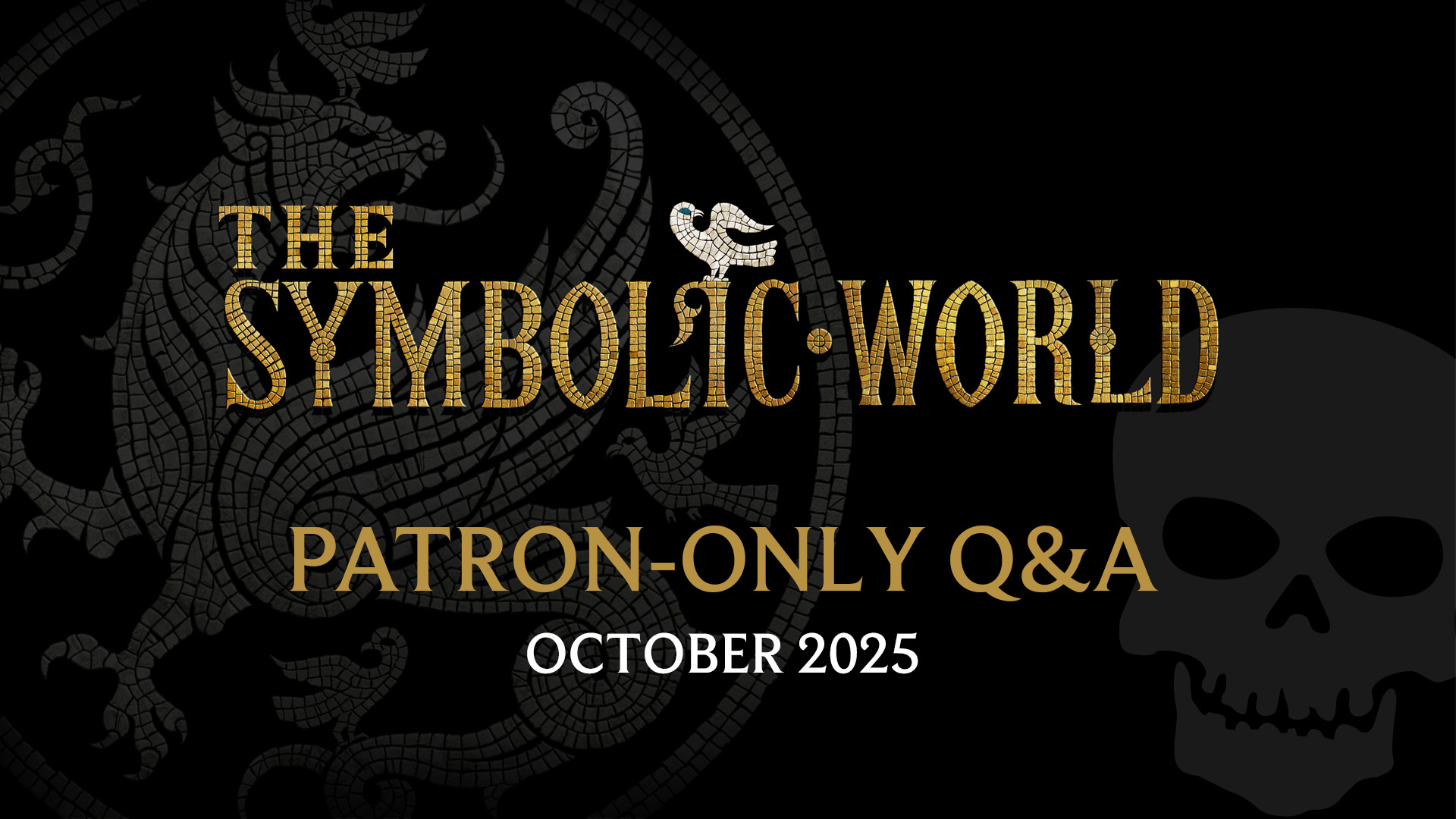On a first reading, Saint Luke’s account of Christ’s appearance on the road to Emmaus (Luke 24:13-32) is puzzling to Christians and non-Christians alike. Luke describes two anonymous disciples discussing Christ’s death and disappearance from the tomb. Interestingly, when the resurrected Christ draws near to them, they do not recognize Him. But eventually, after He explains the Scriptures and breaks bread for them, their eyes are opened. They suddenly see Him. He is no longer merely an interesting anonymous person who knows the Scriptures and shares a meal with them: they recognize the Jesus they have been following for months and months. Their eyes and ears had all the data, but it clicked only after contemplating the Scriptures and taking the bread offered to them.
My contention is that this interesting story tells us not only about our place in the Church, where we listen to the Scriptures and share bread with Christ to see Him, but also about perception in general. Modern cognitive science provides us with a symbolic account of perception. Like the disciples on the road to Emmaus, we have to learn to discern the patterns from the data we blindly receive. As infants, we learn to perceive simple objects, and eventually people. As children, we learn to perceive increasingly complex emotions in people. Later, we begin to discern narratives and moral patterns. As we grow older, we learn to perceive social and historical patterns. As Christians, we strive to perceive the Pattern of all patterns, i.e., God.
First, let me tell you that infants are not born with a fully functional vision.1 It is not only that they do not yet have all the required hardware; they also have not yet developed the proper software. They initially only see chaos. It takes time for them to develop their perception of simple objects, and eventually of people.
Adults can replicate this primordial state by donning special devices. The American neuroscientist Paul Bach-y-Rita2 has developed a special helmet with a mounted camera connected to electrodes that go on the tongue. When you first put on this device and close your eyes, you initially do not see anything. You merely feel electric tingles on your tongue. But as you try to interact with your surroundings, you progressively start perceiving patterns behind the electric data reaching your tongue. The patterns are very coarse initially, but you eventually learn to perceive more and more accurate ones. Within an hour, you can perceive your surroundings, walk and even catch objects. Participants typically describe the experience as seeing the world in bubbles.
And this process is not limited to children and complex lab experiments. We can also notice it in our daily lives, if we pay attention. You’ll especially notice this as you watch a complex sport you’re not familiar with. Your eyes receive all the data, but you are blind to the patterns, so you don’t actually see. Take a Brazilian jiu-jitsu match for example. If you do not know the sport, all that you’ll see is two people who slap hands and go on to make mysterious moves until one of them surrenders. You won’t perceive what happened in between. You have the data, but you can’t perceive the patterns ordering that data. It’s only after practicing and watching the sport that you learn to see the different moves, i.e., the different symbols of jiu-jitsu. If you watch a match after this process, you’ll be able to perceive the moves. You know that by using a particular grip at a given moment, the grappler is setting up a trap for a loop choke, for example. You can now perceive the patterns behind the data your eyes blindly receive. You’ve learned to assemble fact and meaning. You’ve put the symbol together.
The same goes for perceiving more complex patterns, such as other people’s emotions. Infants have to develop their personality and their ability to see other people’s emotions. The role of mothers is especially important in that process.3 Initially, the infant could be viewed as an unordered mess of competing passions. Before individuation allows him to distinguish himself from the outside world, the infant cannot even tell the difference between himself and his mother. But as the mother watches the emotions of her infant and expresses the proper response, the infant is progressively molded into an ordered individual, separate from the rest of the world and capable of perceiving other people’s emotions. Through practice, infants thus start to perceive themselves and their caretakers as distinct persons with emotions. Though their organs receive the same data as before, they can now discern the patterns behind them. They’ve learned to put fact and meaning together.
Notice that this phenomenon is not limited to developing infants. Even adults continuously improve their perception of other people’s emotions. Just think about how you learn to perceive the emotional state of your close ones, for example. After spending enough time with someone, you can tell that a certain smile means much more than meets the eye. You can perceive patterns in your spouse that you could not when you first met them, even though you had access to the same visual data. Or think about how you hopefully become better able to empathize with people as you age.
Let’s take this up a notch. There is solid work in moral psychology showing that we develop our perception of moral patterns as well. Much like we are born with eyes with which we learn to see objects, we are also born with certain moral taste buds with which we learn to see moral patterns4. Through our attempts to interact morally with the world, we develop the ability to discern moral patterns. For instance, children who learn to lie must learn that it is not a morally good thing to do. Perhaps by being scolded by their parents after being caught in a lie, the child learns to see lying as something that is bad. The sense that “I can get away with this lie” recedes and makes way for the feeling that “I shouldn’t lie, it just causes problems further down the line.” Notice that this is not merely about an abstract propositional understanding of lying as bad. It is a direct feeling, a perception of lying as bad. As we grow older, we learn to perceive increasingly complex moral patterns.
Narratives play an important role in this process. By watching a movie or reading a novel, for instance, we can gain accelerated life experience and thus improve our moral perception. Through empathy, we can feel what the characters of a movie feel. We can mimic their moral emotions as they go through their narrative arcs. We collectively pay billions and billions each year to make and watch movies that allow us to experience such condensed realities. These movies are meaningful training grounds for our moral perceptions. We will even gladly sit through tear-jerking tragedies because they allow us to go through such meaningful improvements in our moral perceptions.
And of course, novels and movies also train our perception of narratives in general. That’s yet another kind of perception we learn through practice. Whereas children cannot even tell the story of their day, adults can effectively follow and summarize theirs. A movie that puzzles a child can be trivial for an adult who has assimilated all the patterns that the movie has to teach. Though the child’s and the adult’s eyes and ears receive the same visual and auditory data, the adult can perceive patterns to which the child is blind. Though the young and the wise read the same newspaper, the wise can perceive social and historical narratives to which the young are blind. It takes time for us to discover how to put fact and meaning together, to see the symbols that structure and give rise to narratives.
Before we conclude, notice how this undercuts skeptical arguments against moral and narrative realism. The fact that people and cultures disagree about morality and about the narratives at work in history does not show that these patterns are relative or mere projections. An alternate and arguably better explanation is that we are still in active perceptual development. We are like children struggling and learning how to see. Indeed, once we take into account the abstraction level of moral and narrative patterns, it’s no surprise that people disagree about them. One lifetime is not enough for all of us to converge in the same way that we do regarding the perception of simple objects, for instance.
Let me now conclude by bringing it back to Saint Luke’s account of the disciples on the road to Emmaus. In that story, Luke is telling us how the Church allows us to see Christ Himself. The Christian claim is that the Church is not only a passive training ground, like the movie theater, it is also an active arena. We not only practice seeing narratives, we enter into the Narrative of all narratives5. By contemplating the Scriptures, we learn to see pre-Christian history as pointing to Christ, and post-Christian history as unfolding from Him. In other words, the data of history is unified into and perceived as one story, namely Christ’s story. Then, in eating the Bread of Holy Communion, we actually see and enter into Christ’s body, broken for us. The meal that gathers us as a Church is actually the body of the Person that gathers all of creation.
Now, those are strong metaphysical claims, and my purpose here was not to offer arguments for them. I have tried to do so in other articles.6 My claim here has rather been that if you engage in Church practices, you’ll learn to perceive the world that way. Just as you learned to perceive objects as a child or moral patterns in movies, the Church invites you to learn to perceive God, the Pattern of all patterns.
Linked Articles & Posts
Linked Premium Articles & Posts
1. American Optometric Association. Infant Vision: Birth to 24 Months of Age. Noë, Alva. Out of Our Heads, at 47 and following. Hill and Wang, 2009.
2. Kendrick, Mandy. Tasting the Light. Scientific American, 2009, August. Bach-y-Rita and Neuroplasticity, YouTube, 2012, December
3. Fonagy, Peter and Target, Mary. Attachment and Reflective Function: Their Role in Self-Organization, Development and Psychology, 1997.
4. Haidt, Jonathan and Joseph, Craig. The Moral Mind: How 5 Sets of Innate Moral Intuitions Duide the Development of Many Culture-Apecific Cirtues, and Perhaps Even Modules. In P. Carruthers, S. Laurence, & S. Stich (Eds.), The innate mind (Vol. 3, pp. 367–391). 2006, December.
5. Pageau, Jonathan. “Jordan Peterson and the Stories We Live In”, YouTube, 2020, July.
6. Marceau, Jean-Philippe. “Joyful Suffering in Christ - How the Cross Brings Cosmic Meaning to Our Afflictions”, The Symbolic World Blog, 2020, June. Marceau, Jean-Philippe. “Rediscovering Forms”, The Symbolic World Blog, April, 2020.
MEMBERSHIP
Join our Symbolic World community today and enjoy free access to community forums, premium content, and exclusive offers.



.svg)



.svg.png)






Comments